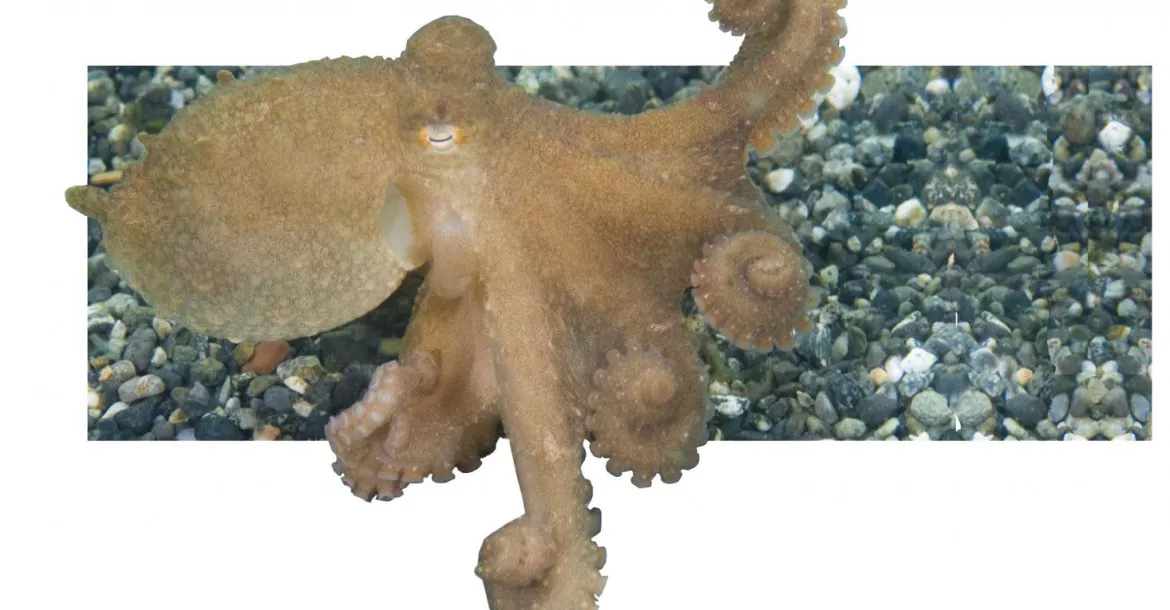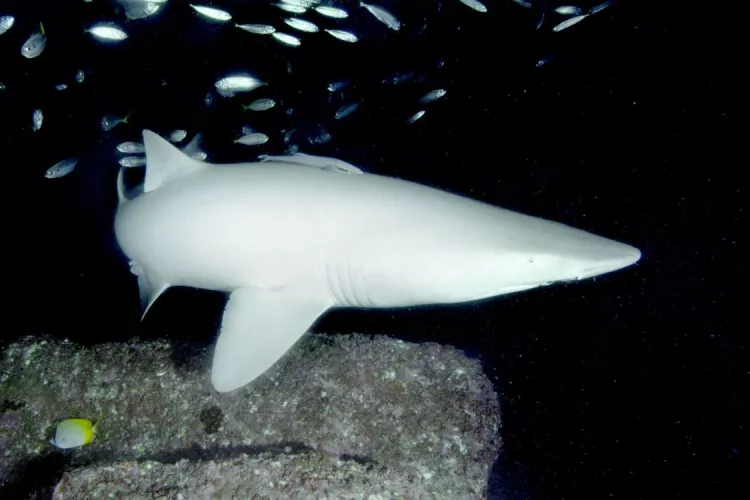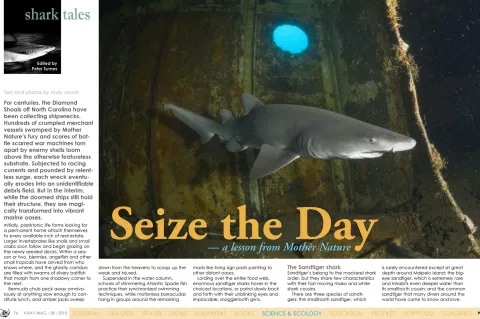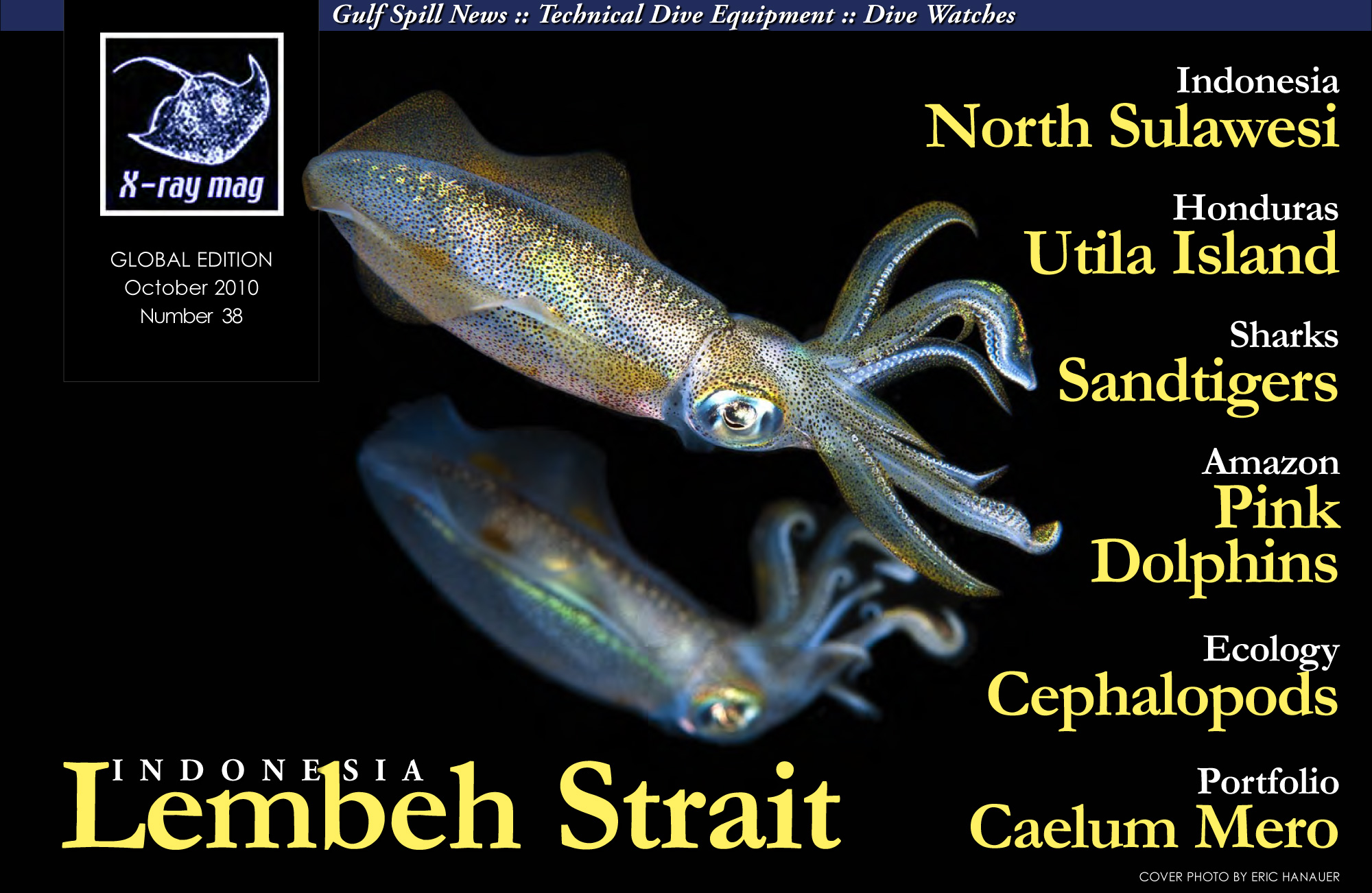For centuries, the Diamond Shoals off North Carolina have been collecting shipwrecks. Hundreds of crumpled merchant vessels swamped by Mother Nature’s fury and scores of battle scarred war machines torn apart by enemy shells loom above the otherwise featureless substrate.
Contributed by
Subjected to racing currents and pounded by relentless surge, each wreck eventually erodes into an unidentifiable debris field. But in the interim, while the doomed ships still hold their structure, they are magically transformed into vibrant marine oases.
Initially, planktonic life forms looking for a permanent home attach themselves to every available inch of real estate. Larger invertebrates like snails and small crabs soon follow and begin grazing on the newly seeded decks. Within a season or two, blennies, angelfish and other small tropicals have arrived from who knows where, and the ghostly corridors are filled with swarms of silvery baitfish that morph from one shadowy corner to the next.
Bermuda chub peck away omnivorously at anything slow enough to constitute lunch, and amber jacks sweep down from the heavens to scoop up the weak and injured.
Suspended in the water column, schools of shimmering Atlantic Spade fish practice their synchronized swimming techniques, while motionless barracudas hang in groups around the remaining masts like living sign posts pointing to other distant oases.
Lording over the entire food web, enormous sandtiger sharks hover in the choicest locations, or patrol slowly back and forth with their unblinking eyes and implacable, snaggletooth grins.
The Sandtiger shark
Sandtiger’s belong to the mackerel shark order, but they share few characteristics with their fast moving mako and white shark cousins.
There are three species of sandtigers: the smalltooth sandtiger, which is rarely encountered except at great depth around Malpelo Island; the bigeye sandtiger, which is extremely rare and inhabits even deeper water than its smalltooth cousin; and the common sandtiger that many divers around the world have come to know and love.
Even beyond the diving community, sandtigers are well known celebrities. Their ability to gulp air in order to counteract their negative buoyancy means that they do not have to swim continuously to avoid sinking. This makes them popular sharks in public aquariums because they are less likely to swim into the walls and inflict damage on themselves.
However, long-term incarceration in small aquarium tanks does have an adverse effect on the sharks. After a few years in captivity, sandtigers often show signs of abnormal growth patterns including stunted fins and hunched backs.
Even in the wild, sandtigers have their problems. Many populations struggle with parasitic growths in their mouths, and I have seen sandtigers with spine deformations and even one albino that had somehow managed to survive till adulthood.
Sandtigers (called ragged-tooth sharks in Africa and grey nurse sharks in Australia) are unique in more ways than one. They are livebearers that produce two offspring (one in each uterus) per season. The developing embryos indulge in inter-uterine cannibalism. Once they have devoured all of their smaller siblings, they begin consuming a constant supply of unfertilized eggs that are channeled into the oviducts—a feeding strategy known as oophagy.
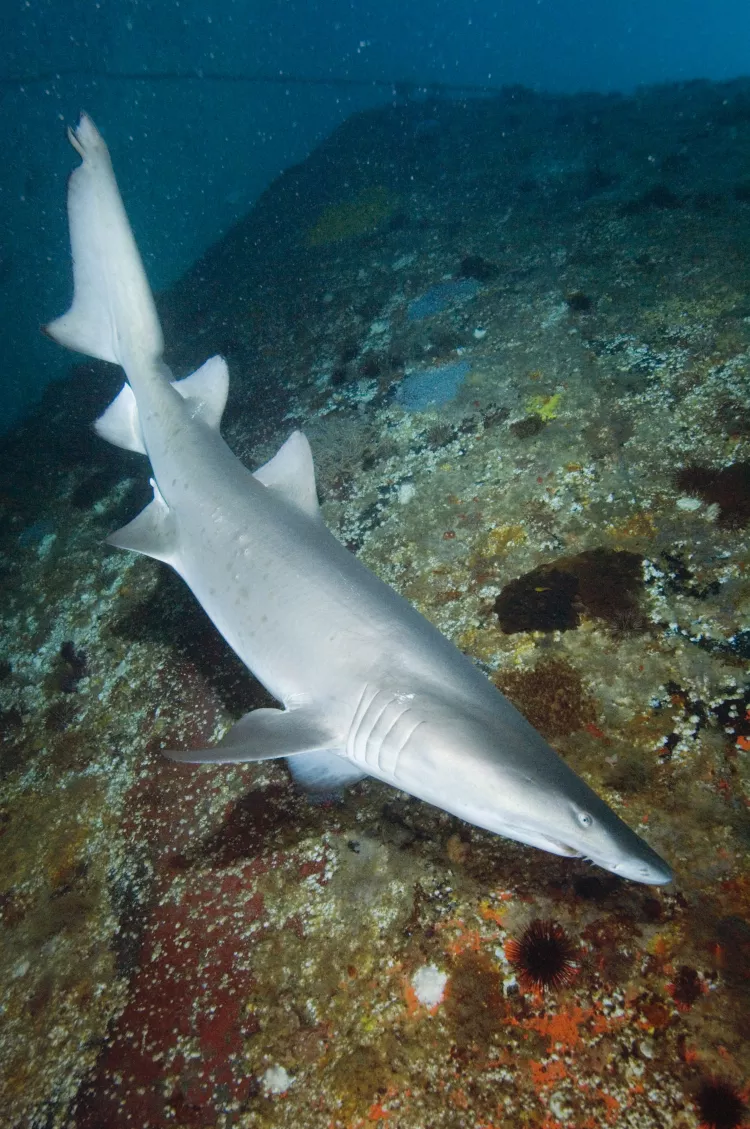
The sandtiger’s ability to mooch slowly along with a stomach full of air is a fascinating adaptation, but in some ways, it may be a double-edged sword. It allows the sharks to conserve energy, which means that they do not have to feed as often as faster swimming species. That is a great advantage for large predators that have to rely on a limited food supply like the sandtigers on the wrecks of North Carolina.
But, sandtigers are also ram ventilators, and their casual approach to swimming may in some ways limit their oxygen uptake, making them more sluggish and possibly even slower witted than other mackerel sharks.
Sandtigers are not picky eaters. They are known to consume bony fishes, small sharks, rays, squids, crabs and lobsters. Interestingly, the North Atlantic population has not yet developed a taste for red lionfish.
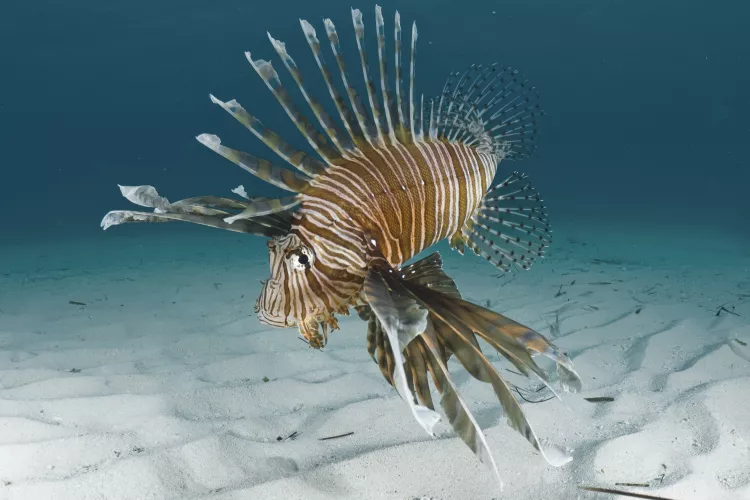
Lionfish
A decade ago, lionfish from the tropical Pacific somehow managed to establish themselves on the wrecks of the Diamond Shoals. Its possible that the invaders were flushed from the bilges of passing ships, or they could have been released from home aquariums. However they got there, they appear to be flourishing. As they have no natural enemies, it looks as though the ecosystems that they have invaded may be changed forever by their presence.
One of the best known wrecks off the North Carolina coastline is called the Spar. It is a thriving 300-foot long artificial reef that was sunk about a two-hour run from Morehead City. Because of its elevation and intact superstructure, it is often packed with sandtigers.
In recent years, it has been plagued by red lionfish, but during a productive weekend shooting sandtigers on the Spar this summer, I was unable to locate a single invader. Could it be that the sharks have developed a taste for spicy Asian cuisine? It’s a nice thought, but it is more likely that the lionfish have either migrated into cooler water for the summer, or they are hiding in the bowels of the wreck where sandtiger photographers seldom venture.
It may seem like a catastrophic problem, but before you lose too much sleep over the lionfish invasion, consider this: marine environments are in a constant state of change. Change can seem scary, especially when humanity is involved in manipulating the natural order of things, but the wrecks of the Diamond Shoals are a manipulation as well.
Five hundred years ago the biggest topographic anomalies on the sea floor were probably a few small Viking ships. A thousand years ago there would have been nothing on the Diamond Shoals except an occasional whale carcass.
Now that large vessels are equipped with 21st-century navigational aids and better marine safety protocols, North Carolina’s crumbling underwater habitats are unlikely to be replenished. It’ll take a while, but in a century or two, there will be very few manmade structures left on the seafloor. That means, no more colonies of invertebrates, no more levitating sandtiger sharks and no more lionfish.
Mother Nature rolls with the punches. When conditions permit, she presents us with jewels like the marine oases we have right now.
The lesson to be learned from her is never to waste an opportunity. So, dust off your dive gear and enjoy the wondrous diversity of marine life on the shipwrecks of North Carolina while you can.
Find out how you can help to protect sharks by visiting elasmodiver.com: elasmodiver.com/protectingsharks.htm ■
Published in
-
X-Ray Mag #38
- Läs mer om X-Ray Mag #38
- Log in to post comments

